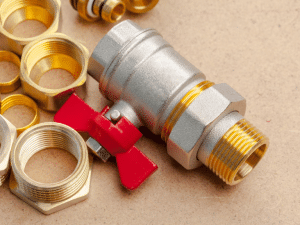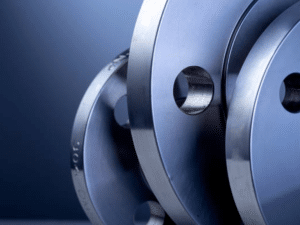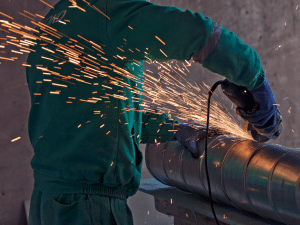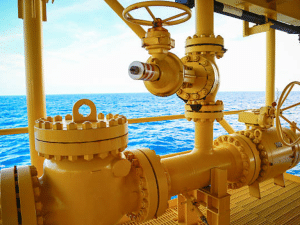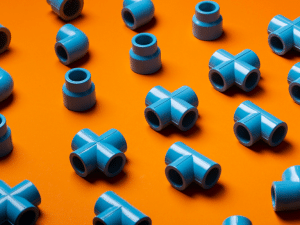Latest Innovations from Pipes and Fittings Suppliers in the UAE
Pipes and fittings suppliers have turned basic industrial equipment into something much more advanced. What was once just a simple need has now become modern technology that’s genuinely impressive.
The pipes and fittings suppliers in the UAE aren’t just keeping up with global trends; they’re leading with innovations that even surprise industry experts.
Today’s pipe systems can predict problems before they happen, use smarter materials, and even connect with digital systems. This is way beyond traditional plumbing. These companies are setting standards that other countries now want to copy. The technology behind them has become truly sophisticated.
Smart Pipes and Fittings Material
Pipes that can predict their failures before they happen. Sounds like science fiction, right? Now, the leading pipe fittings and flanges manufacturers are embedding sensors allowing systems to monitor pressure, temperature, and vibrations as they change.
The numbers are impressive, too. These self-monitoring systems can predict failures with about 95% accuracy, giving maintenance teams weeks or even months of advance warning. One major supplier recently deployed these across several UAE projects, and the results speak for themselves: virtually zero unexpected breakdowns.
But here’s what’s really clever about this approach: it’s not just about preventing disasters. These systems are learning. Every data point helps them get smarter, creating a knowledge base that benefits the entire industry.
The Oil Sector Gets a Makeover
The pipe and fitting solutions for the oil sector have undergone what can only be described as a complete makeover. Advanced metallurgy is creating alloys that last 50% longer than traditional materials, even under the harsh conditions typical in oil processing facilities.
These aren’t just incremental improvements either. New combinations of nickel, chromium, and molybdenum are handling chemical exposure and extreme temperatures that would have destroyed earlier materials. Sure, the upfront costs are higher, but the lifecycle economics make them increasingly attractive.
Then there’s the modular revolution. Instead of custom-welding everything on-site, which anyone who’s managed a construction project knows can be a scheduling nightmare, suppliers are developing precision-engineered components that fit together with almost LEGO-like simplicity. Installation times are dropping by 40% or more on major projects.
Digital Integration Changes the Game
The digital transformation happening across UAE suppliers is genuinely changing how entire projects get conceived and executed. Building Information Modeling (BIM) integration has moved far beyond basic 3D visualization.
Modern pipes and fittings suppliers in the UAE are creating comprehensive digital twins of their product catalogs. Architects and engineers can now specify components, analyze performance under specific conditions, and even predict maintenance requirements – all before manufacturing begins.
Real-time optimization is becoming standard practice. Complex refinery layouts that once took weeks to design can now be optimized in hours, with software suggesting material changes, route modifications, and identifying potential maintenance access issues. It’s like watching a really intelligent puzzle solve itself.
Sustainability Meets Real Performance
Sustainability used to be one of those feel-good buzzwords that didn’t translate into practical benefits. Not anymore. Several pipe fittings and flanges manufacturers have developed recycling programs that work effectively.
The process is surprisingly elegant: old steel fittings get broken down and reforged into new products with zero performance loss. Energy consumption drops by about 60% compared to starting with raw materials, and the refined grain structures often make recycled products stronger than the originals.
Bio-based coatings represent another interesting development. Plant-derived polymers are replacing traditional petroleum-based protective layers, often with superior corrosion and chemical resistance. There’s something delightfully ironic about the oil industry infrastructure moving away from oil-based materials, but innovation rarely follows predictable paths.
Regional Challenges Drive Innovation
The UAE’s environment, summer heat, humidity, sandstorms, and salt exposure require running continuous stress tests on industrial equipment. This has forced suppliers to develop solutions that might seem overkill elsewhere but are absolutely essential here.
Sand-resistant coatings exemplify this regional innovation. Traditional materials gradually wear down under constant particle bombardment, but new surface treatments actually get smoother over time as they’re exposed to abrasion. The physics might seem counterintuitive, but the results are undeniable.
Thermal management has seen similar breakthroughs. Pipe and fitting solutions for the oil sector now include expansion joints that automatically adjust as temperatures fluctuate throughout the day. No more manual adjustments during those brutal summer months when temperatures can swing 30 degrees between dawn and afternoon.
Industry Collaboration Drives Progress
What’s particularly encouraging is how collaborative the ecosystem has become. Pipes and fittings suppliers in the UAE are moving beyond simple competition toward genuine cooperation on research, development, and industry standards.
This shift makes sense when you consider the scale of projects these companies tackle. Sharing R&D costs and pooling expertise allows smaller innovations to compound into major breakthroughs. It’s refreshing in a business environment that often rewards zero-sum thinking.
The results are visible across the industry. Technical standards are improving faster, new materials are being validated more thoroughly, and best practices are spreading more quickly than ever before.
Future Trends Worth Watching
Although predicting the future is always a risky business, there are a number of trends that seem reasonably clear. Firstly, AI-based predictive maintenance systems are moving from the experimental phase to almost mainstream. Also, self-healing materials are now showing potential laboratory test results.
The combination of IoT sensors with the verification systems of blockchains could change the game for quality assurance and supply chain traceability. Imagine being able to verify the entire manufacturing and installation history for every component in a safety-critical system.
New manufacturing methods, like 3D printing special fittings, are now affordable even for small production runs. This means custom parts can be made much faster without losing quality.
The Bigger Picture
The way pipes and fittings suppliers in the UAE are made and used shows how industrial systems are changing as a whole. What used to be purely mechanical is now becoming more digital, eco-friendly, and smart.
These aren’t just small upgrades; they mark a big shift in how critical infrastructure is designed, built, and maintained. Pipes are no longer just hollow tubes, and considering how much modern life depends on them working without fail, this change feels long overdue.
Whether you see it as a full industry transformation or just smarter plumbing depends on your perspective. Either way, it’s pretty amazing to see such an old technology being reinvented for today’s world.


